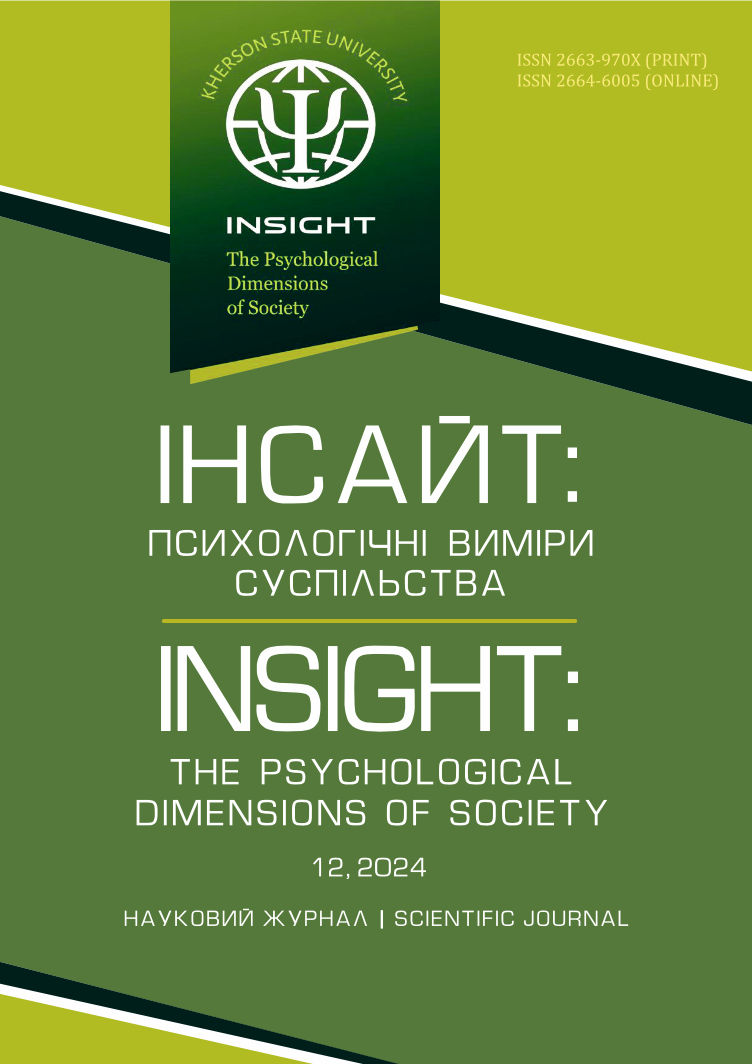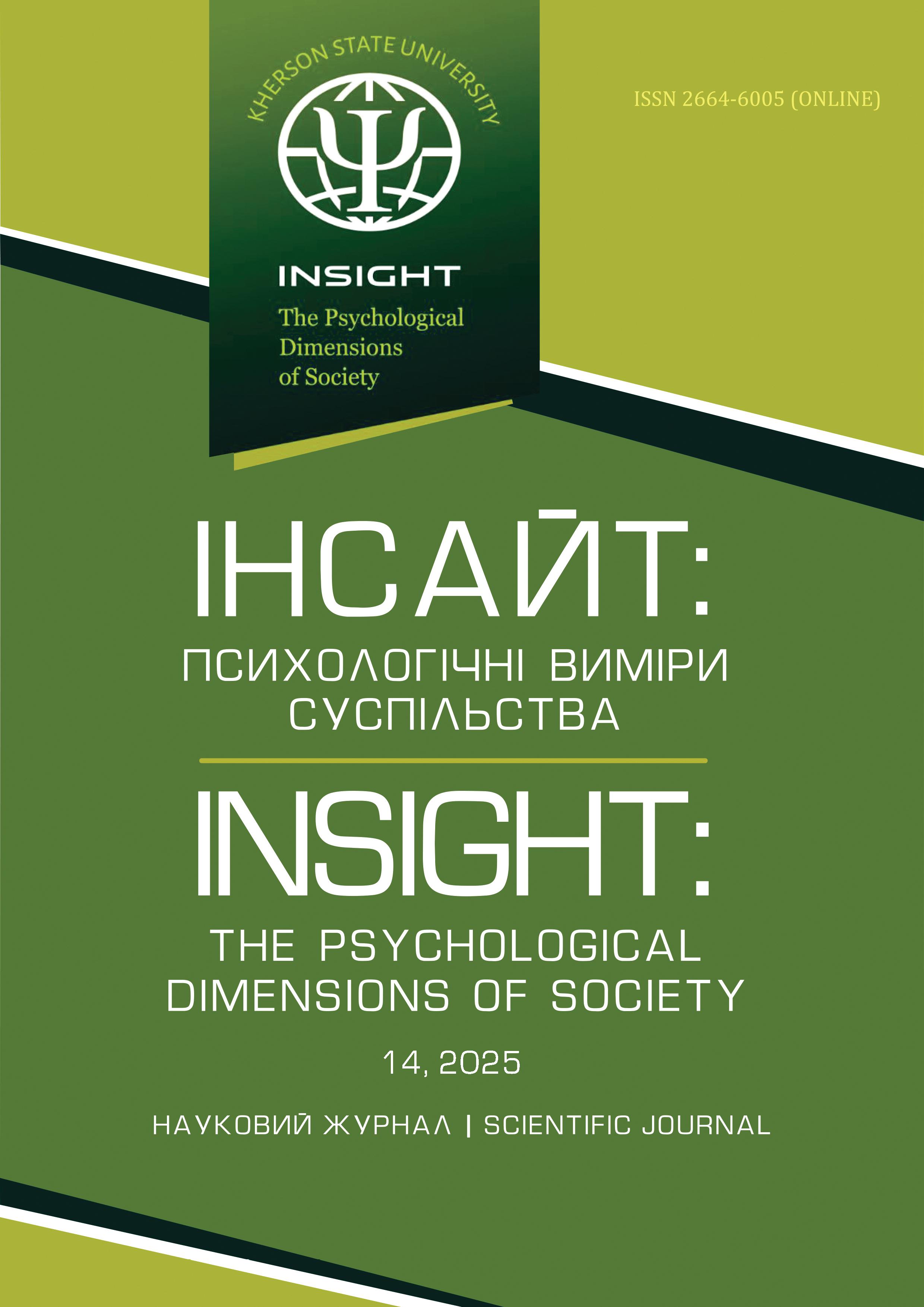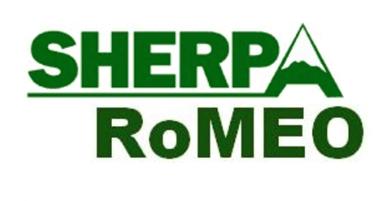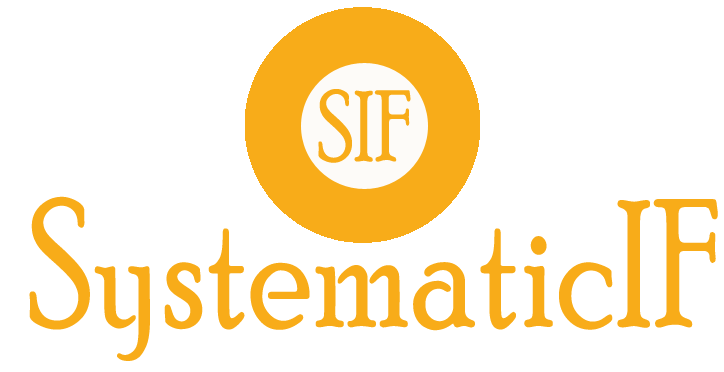Team-Building Dimensions Assessment Scale: Development and Psychometric Validation of a New Tool
Abstract
This study aims to theoretically substantiate, develop, and validate the diagnostic tool for assessing the process and indicators of team- building in workgroups. This new psychometric scale, based on a specific theoretical model, aims to assess the functioning and potential for improvement of workgroups within organizations. The scale, with its seven dimensions of team building (such as objective, method, roles, leadership, communication, climate, and development), can make a valuable contribution to the field of team-building assessment, as it provides a comprehensive view of team dynamics. Methods. Based on a non-experimental model (specifically, a cross-sectional survey design), the research consists of three studies involving a non- probabilistic reasoned sampling strategy (N =215; N2 = 157; N3 = 279). The original instrument was initially tested on a sample of workers whose responses allowed routine statistical analyses. The instrument was subsequently modified and reduced to its more significant elements, so it was administered to the second sample of employees. Finally, after conducting a confirmatory factor analysis, the scale administered to the last sample of material industry employees. Results. Like Cronbach’s Alpha, the inter-factors and inter- items correlation indices proved significant. The validated instrument, initially consisting of 69 items, later reduced to 19, is characterized by excellent internal interdependence, which the CFA also confirmed. In the present study, the model fit indices were RMSEA = .079; SRMR = .056, CFI = .938, NFI = .907, IFI = .939, and RFI = .878. Discussion and conclusions. The findings of this study have significant practical implications. The TeBuDAS, with its comprehensive approach to team-building assessment, focusing on team cohesion and performance, offers a robust tool for organizational development. By considering the underlying culture of the organization and promoting a learning-oriented evaluation process, the TeBuDAS can guide the development strategies of the entire organization more efficiently and effectively.
Downloads
References
Aritzeta A., Senior B., Swailes S. Team Role Preference and Cognitive Styles: A Convergent Validity Study. Small Group Research. 2005. Vol. 36(4). P. 404–436. https://doi.org/10.1177/1046496404273742
Arthur W., Edwards B. D., Bell S. T., Villado A. J., Bennett W. Team Task Analysis: Identifying Tasks and Jobs That Are Team-Based. Human Factors. 2005. Vol. 47(3). P. 654–669. https://doi.org/10.1518/001872005774860087
Barbuto J. E., Wheeler D. W. Scale development and construct clarification of servant leadership. Group and Organisational Management. 2006. Vol. 31(3). P. 300–326. http://doi.org/10.1177/1059601106287091
Capozza, D. Il differenziale semantico. Problemi teorici e metrici. Bologna, IT: Patron Editore, 1977. URL: https://www.unisalento.it/documents/20152/3507587/DIFFERENZIALE+SEMANTICO.pdf/cdf2c5bb-bfe1-1359-cee5-ef076adc5f5e?version=1.0&download=true
Cheng C., Chau C. L. Gamification-based intervention for enhancing team effectiveness and coping flexibility: Randomized controlled trial. Frontiers in Psychiatry. 2022. Vol. 13. https://doi.org/10.3389/fpsyt.2022.941252
Cicchetti D. V. Testing the normal approximation and minimal sample size requirements of weighted kappa when the number of categories is large. Applied psychological measurement. 1981. Vol. 5(1). P. 101–104 https://doi.org/10.1177/014662168100500114
Comrey A. L., Lee H. B. A first course in factor analysis (2nd ed.). Mahaw, NJ: Lawrence Erlbaum Associates, Inc.,1992. https://doi.org/10.4324/9781315827506
Costello M., Rusell K., Coventry T. Examining the average scores of nursing teamwork subscales in an acute private medical ward. BMC nursing. 2021. Vol. 20(1). P. 84 https://doi.org/10.1186/s12912-021-00609-z
De Jong A., Wetzels M., de Ruyter K. Linking employee perceptions of collective efficacy in self‐managing service teams with customer‐perceived service quality: A psychometric assessment. International Journal of Service Industry Management. 2008. Vol. 19(3). P. 353–378. https://doi.org/10.1108/09564230810875011
Dückers M. L., Wagner C., Groenewegen P. P. Developing and testing an instrument to measure the presence of conditions for successful implementation of quality improvement collaboratives. BMC Health Serv Res. 2008. Vol. 8. P. 172. https://doi.org/10.1186/1472-6963-8-172
Espedido A., Searle B. J., Griffin B. Peers, proactivity, and problem-solving: A multilevel study of team impacts on stress appraisals of problem-solving demands. Work Stress. 2019. Vol. 34(3). P. 219–237. https://doi.org/10.1080/02678373.2019.1579767
Gabrielsson S., Engström, A., Gustafsson S. Evaluating reflective practice groups in a mental health context: Swedish translation and psychometric evaluation of the clinical supervision evaluation questionnaire. BMC Nursing. 2019. Vol. 18(1). P. 1–7. https://doi.org/10.1186/s12912-019-0326-2
Ginting H., Mahiranissa A., Bekti R., Febriansyah H. The effect of outing Team Building training on soft skills among MBA students. The International Journal of Management Education. 2020. Vol. 18(3). P. 100423. https://doi.org/10.1016/j.ijme.2020.100423
Jiang-shi Z., Shu D., Shu-ming M., Xiang-yao W. Research on Leader-Member Exchange and Work Performance. 2009. In 2009 International Conference on Information Management, Innovation Management and Industrial Engineering.
Kline P. A handbook of test construction: Introduction to psychometric design. London, UK: Methuen Publishing, 1986. URL: https://api.pageplace.de/preview/DT0400.9781317444602_A25034282/preview-9781317444602_A25034282.pdf
Kloep L., Helten A. L., Peifer C. A. Playful Way to Promote Team Flow: Evaluation of a Positive Psychological Board Game for Team Building. International Journal of Applied Positive Psychology. 2023.Vol. 8. P. 405–427. https://doi.org/10.1007/s41042-023-00096-4
Konting M. M., Norfaryanti K., Man N. A. Quality Assurance in higher education institutions: A survey exists among Universiti Putra Malaysia graduating students. International Education Studies. 2009. Vol. 2(1). P. 25–31. https://doi.org/10.5539/ies.v2n1p25
Kwon S. H. Analyzing the impact of team-building interventions on team cohesion in sports teams: a meta-analysis study. Frontiers in Psychology. 2024. Vol. 15. P. 1353944. https://doi.org/10.3389/fpsyg.2024.1353944
Loo R. Assessing “team climate” in project teams. International Journal of Project Management. 2002. Vol. 21(7). P. 511–517. https://doi.org/10.1016/S0263-7863(02)00058-3
Luo L., Zhang L., Zheng X., Wu G. A hybrid approach for investigating impacts of leadership dynamics on project performance. Engineering, Construction, and Architectural Management. 2022. Vol. 29(5). P. 1965–1990. https://doi.org/10.1108/ECAM-02-2020-0094
Mahembe B., Engelbrecht A. S. A confirmatory factor analytical study of a servant leadership measure in South Africa. SA Journal of Industrial Psychology. 2013. Vol. 39(2). P. 1–8. http://doi.org/10.4102/sajip.v39i2.1127
Mäkelä L., Tanskanen J., De Cieri H. Do Relationships Matter? Investigating the Link Between Supervisor and Subordinate Dedication and Cynicism via the Quality of Leader–Member Exchange. Journal of Leadership Organizational Studies. 2021. Vol. 28(1). P. 76–90. https://doi.org/10.1177/1548051820967010
Matin H. Z., Jandaghi G., Karimi F. H., Hamidizadeh A. Relationship between interpersonal communication skills and organizational commitment (Case Study: Jahad Keshavarzi and University of Qom, Iran). European Journal of Social Sciences. 2010. Vol. 13(3). P. 387–398. https://www.semanticscholar.org/paper/Relationship-between-Interpersonal-Communication-of-Matin-Jandaghi/2eec720d7ca2b7437398398fc84244a0ab61bc1f?utm_source=direct_link
Nauman S., Musawir A. U., Munir H., Rasheed I. Enhancing the impact of transformational leadership and team-building on project success: the moderating role of empowerment climate. International Journal of Managing Projects in Business. 2022. Vol. 15(2). P. 423–447. https://doi.org/10.1108/IJMPB-02-2021-0031
Nicholson L., Ortiz M. V., Wang Y., Walsh H., Ottolini M. C., Agrawal D. Successful implementation of a novel collaborative interprofessional educational curriculum for nurses and residents in a pediatric acute care setting. Journal of interprofessional education practice. 2019. Vol. 17. P. 100284. https://doi.org/10.1016/j.xjep.2019.100284
Nigro G., Galli I. Il trattamento dei dati di un differenziale semantico con l’analisi delle corrispondenze. Bollettino di Psicologia Applicata. 1986. Vol. 177. P. 41–47. http://pascal-francis.inist.fr/vibad/index.php?action=getRecordDetail&idt=8049798
Nunnally J. C. Psychometric theory. 2nd Edition, New York: McGraw-Hill, 1978. URL: http://hdl.handle.net/123456789/11061
Osgood C. E., Suci G. J., Tannenbaum P. H. The measurement of meaning. Champaign, IL: Univer. Illinois Press,1957. URL: https://gwern.net/doc/psychology/1957-osgood-themeasurementofmeaning.pdf
Ostermann T., Bertram M., Büssing A. A pilot study on the effects of a team building process on the perception of work environment in an integrative hospital for neurological rehabilitation. BMC complementary and alternative medicine. 2010. Vol. 10(1). P. 1–10. https://doi.org/10.1186/1472-6882-10-10
Parthasarathy P., Apampa,B., Manfrin A. Perceptions of team-based learning using the Team-Based Learning Student Assessment Instrument: an exploratory analysis amongst pharmacy and biomedical students in the United Kingdom. Journal of Educational Evaluation for Health Professions. 2019. P. 16. https://doi.org/10.3352/jeehp.2019.16.23
Piza F. M. T., Celi L. A., Deliberato R.O., Bulgarelli L., De Carvalho F. R. T., Filho R. R., De La Hoz M. A. A., Kesselheim J. C. Assessing team effectiveness and affective learning in a datathon. Int J Med Inform. 2018. P. 40-44. https://doi.org/10.1016/j.ijmedinf.2018.01.005
Quaglino G. P. Cortese C. G. Gioco di squadra. Come un gruppo di lavoro può diventare una squadra eccellente. Milano, IT: Raffaello Cortina Editore, 2005. URL: https://www.docsity.com/it/gian-piero-quaglino-claudio-g-cortese-gioco-di-squadra-come-un-gruppo-di-lavoro-puo-diventare-una-squadra-eccellente/398056/?utm_source=generic&utm_medium=button&utm_campaign=document_share
Quaglino G. P., Casagrande S., Castellano A. M. Gruppo di lavoro, lavoro di gruppo: Un modello di lettura della dinamica di gruppo, una proposta di intervento nelle organizzazioni. Milano, IT: Raffaello Cortina, 1992. URL: https://moodle2.units.it/pluginfile.php/493720/mod_resource/content/1/2-Disp.lavoro-di-gruppo.pdf
Sim S.-M., Azila N. M. A., Lian L.-H., Tan C. P. L., Tan N.-H. A Simple Instrument for the Assessment of Student Performance in Problem-based Learning Tutorials. Annals of the Academy of Medicine. 2006. Vol. 35(9). P. 634–641. https://doi.org/10.47102/ANNALS-ACADMEDSG.V35N9P634
Tabachnick B. G. and Fidell L. S. Using Multivariate Statistics. Boston, MA: Person Education, 2012. URL: https://www.scirp.org/reference/referencespapers?referenceid=1568409
Wu Q., Cormican K. Shared Leadership and Team Effectiveness: An Investigation of Whether and When in Engineering Design Teams. Frontiers in Psychology. 2021. Vol. 11, P. 569198. https://doi.org/10.3389/fpsyg.2020.569198
Yap J. B. H., Leong W. J., Skitmore M. Capitalizing teamwork for enhancing project delivery and management in construction: Empirical study in Malaysia. Engineering, Construction and Architectural Management. 2020. Vol. 27(7). P. 1479–1503. https://doi.org/10.1108/ECAM-10-2019-0581
Yi, Y. J. Effects of team‐building on communication and teamwork among nursing students. International nursing review. 2016. Vol. 63(1). P. 33–40. https://doi.org/10.1111/inr.12224
Authors who publish with scientific journal agree to the following terms:
• All scientific papers may be freely copied and distributed on any medium and in any format, provided that the references to the initial data of the scientific work are indicated.
• Authors retain copyright and grant the journal right of first publication with the work simultaneously licensed Creative Commons Attribution License .
• Authors are able to enter into separate, additional contractual arrangements for the non- exclusive distribution of the journal’s published version of the work (institutional repository, your website, monograph), with an acknowledgement of its initial publication in this journal.


